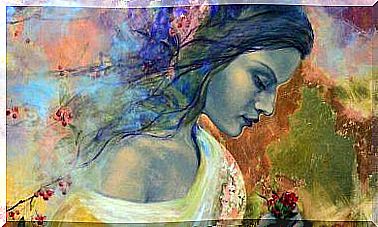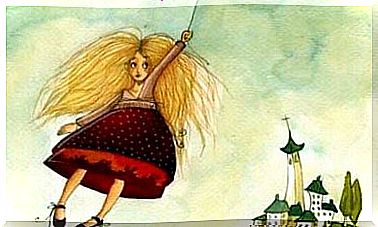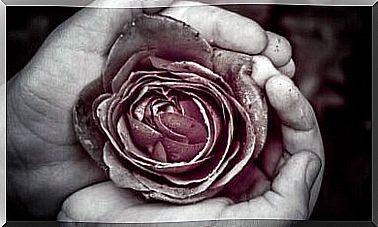Quentin Tarantino And The Aesthetics Of Violence
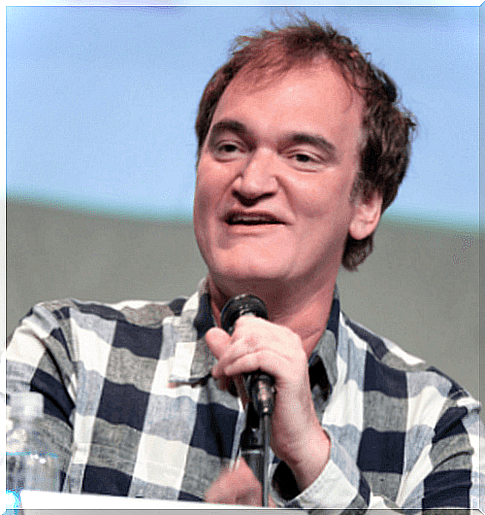
Quentin Tarantino is one of the directors who managed to create his own brand, his personal identity.
When we watch one of his films, we know perfectly well what we will find: violence, music, fetish actors, close-ups of female feet, scenes taken from the trunk, abundant tributes, etc.
A mix of aspects that the director likes, from tributes to directors of the caliber of Alfred Hitchcock to kung fu films, category B and spaghetti westerns, up to The Ancestors .
Quentin Tarantino does what he wants. He makes cameos, plays with color, recycles floors, reinvents scenes… and mixes everything up to build what he was looking for.
Influences on Quentin Tarantino
Many could accuse it of plagiarism, but we must ask ourselves if it is right when it is totally recognized and the intention of the author is precisely to transfer a scene to another film, to another context, building something completely different.
Everyone, absolutely everyone, draws on our tastes and influences. When it comes to creating something totally new in the 21st century, we resort to a quote or reinvent something that already exists.
Tarantino’s passion
Tarantino needs to draw on other films because, first of all, he is a cinephile.
On more than one occasion he stressed that to make a good cinema, it is not necessary to go to any school. You simply have to have a real passion for what you do.
Cinema is born from passion, his films and unforgettable baths in tomato sauce are born.
So we should ask ourselves: why do you like violence so much? What does Tarantino’s cinema have that makes it so special?
Key elements of Quentin Tarantino’s cinema
Although he does not have a background as a director, his love for cinema led him to direct it. Tarantino studied acting and worked in a film library, a place he cited as a source of inspiration.
Among friends, and with the intention of creating a simple film, Le iene was born, or rather, what would become Le iene . Tarantino didn’t really believe it was possible to make a film at that time, as he thought he was adapting to a cheap production and among friends.
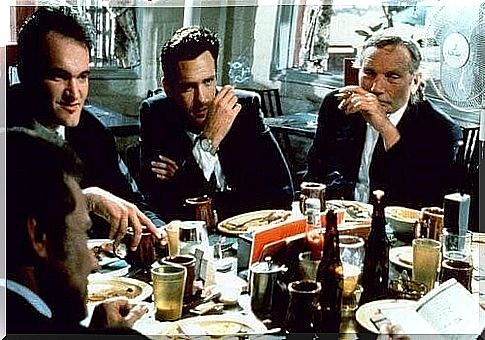
However, producer Lawrence Bender read the script and offered him to translate it into the film we know today.
Tarantino had just created a brand of identity that would consecrate him as a director and lead him to sow an infinity of successes and applause in the future.
Plagiarism or inspiration
Regarding plagiarism, Tarantino reuses his sources of inspiration giving them a new meaning, situating them in a new context and creating something new and original starting from them.
He does not hide the sources of inspiration, but raises them, pays them homage and shows them to the public. So we have the famous prom scene in Pulp Fiction inspired by Fellini’s 8 1/2 or Uma Thurman’s dress in Kill Bill that is enormously reminiscent of Bruce Lee.
Watching a Tarantino film becomes an authentic exercise of intellectuality. His films have their own subject and identity, but are full of allusions and references.
His films
With Pulp Fiction (1994), Tarantino consecrated himself as a director and screenwriter, attracted the attention of audiences and critics and won the first Oscar for best original screenplay
Other titles like Jackie Brown (1997), Inglourious Basterds (2009) or Kill Bill (2003) have sealed the Tarantino brand.
Finally, the latest films imply a declaration of love towards a genre forgotten today: the spaghetti western, with Django Unchained (2012) and The Hateful Eight (2015). With them he recovers the essence of the genre and of directors such as Sergio Leone, in addition to the figure of Ennio Morricone, composer of some of the most memorable film soundtracks.
Currently, Tarantino is working on a new film and has stated that his filmography will consist of only ten films.
The music
Music is another pillar on which his cinema is built. He himself is responsible for personally choosing the soundtrack.
The result, once again, is a great mix of influences and styles. Even if we are in Nazi-occupied France, Tarantino delights us with a cinema that burns to the rhythm of Cat People , by David Bowie.
Quentin Tarantino does not care too much about anachronisms, he will then take care of fitting the pieces of the puzzle together.
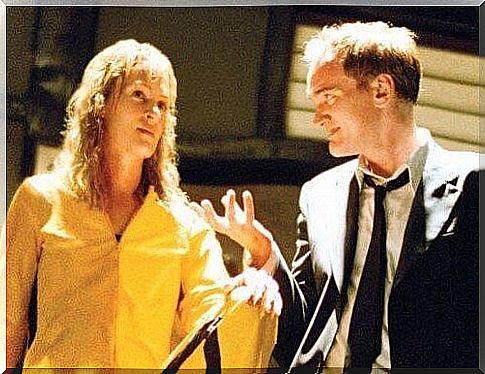
Quentin Tarantino and the taste for violence
If there is anything that defines Tarantino’s cinema it is undoubtedly violence. A totally explicit violence, bloodbaths that, at times, border on the absurd and the ridiculous.
It doesn’t matter too much if a character dies or lives, as the truth is, it’s really hard to be empathetic with them. A good example is found in The Hateful Eight .
When we go to see a Tarantino movie, we don’t expect to find moving characters or characters who survive long on the screen. Let’s go see blood, violence and laugh at them.
The music, along with the disordered narrative and explicit violence, which is even beautiful, provides us with scenes that, far from disgusting us, we like.
The famous cut-ear scene in The Hyenas , for example, is enlivened by music and dance. In turn it is a “replica” of a scene from the film Django (Corbucci, 1996). In this way, violence is no longer uncomfortable and turns into an object of delight.
Can violence be fun? Where is the limit? In this regard, Tarantino has stressed on several occasions that his cinema is nothing more than fantasy, a fiction to have fun with.
We don’t have to ask ourselves if this violence is moral or not, we just have to have fun. A violence that, enlivened by music and peppered with contrasting games, is attractive, aesthetic.
Violence as entertainment
It is not the same thing to watch a film in which violence presents itself as reality, in a gory form, as to see a film in which violence is nothing more than an excuse to entertain.
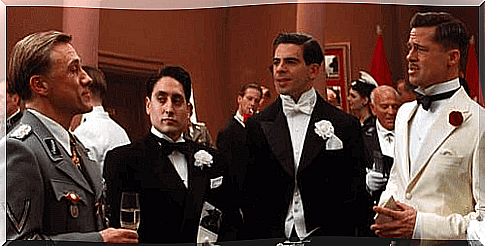
Tarantino also alludes to kung fu films, in which violence is present and no one wonders about their morality, since they are pure entertainment.
Faced with a film of bloody, unjust or real violence such as The Passion (Mel Gibson, 2004), The Experiment – Human guinea pigs (Oliver Hirschbiegel, 2001) or Irréversible (Gaspar Noé, 2002), we would feel no pleasure. On the contrary, only discomfort.
This does not happen when watching a film by directors like Martin Scorsese or Quentin Tarantino. Here violence is catharsis, liberation and purification through images.
The Greek tragedy
Nothing new. Aristotle had already underlined this in his Poetics, in which he formulated a profound analysis of the Greek tragedy and its presuppositions.
Why did the Greeks go to theatrical performances in which violence and incest appeared on the stage? Precisely because they were taboo issues for society. Of passions that belong to the human being and that are repressed by society.
By participating in such a show, catharsis is produced, the purification of emotions. This argument would later be developed by some psychoanalytic authors such as Freud. It seems, therefore, that the taste for violence is not a prerogative of contemporaneity, nor of cinema, but has always been linked to human beings. And, in one way or another, we have tried to shape with art.
Quentin Tarantino always points out that his cinema is nothing but fantasy, it is not real. That’s why they like it so much. It is a catharsis, a game with our subconscious, with passions and emotions. And, without a doubt, it is a cinema to have fun with.
